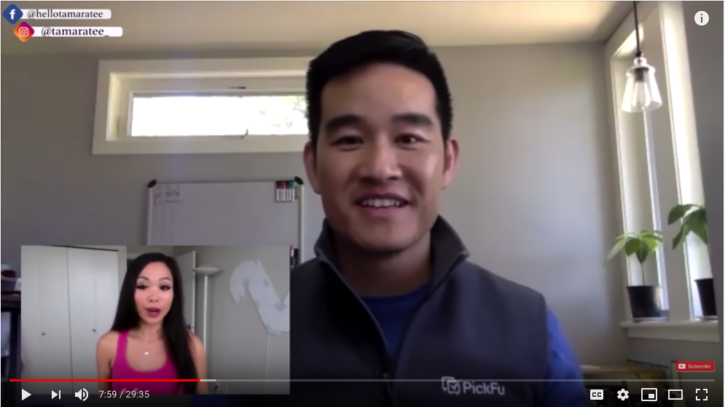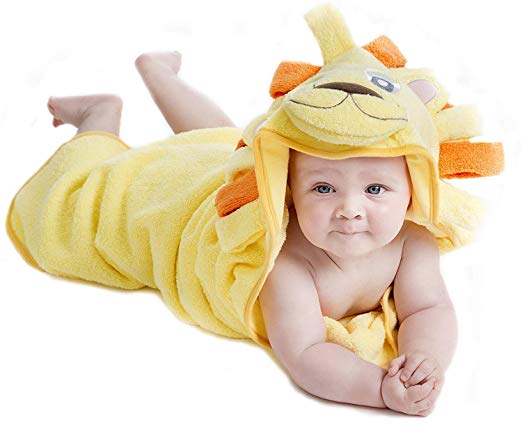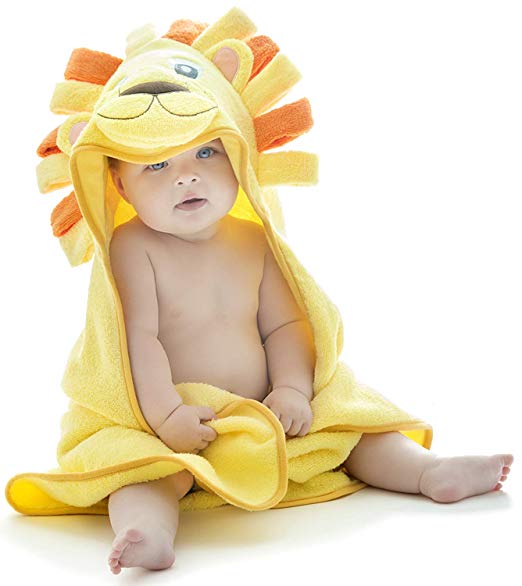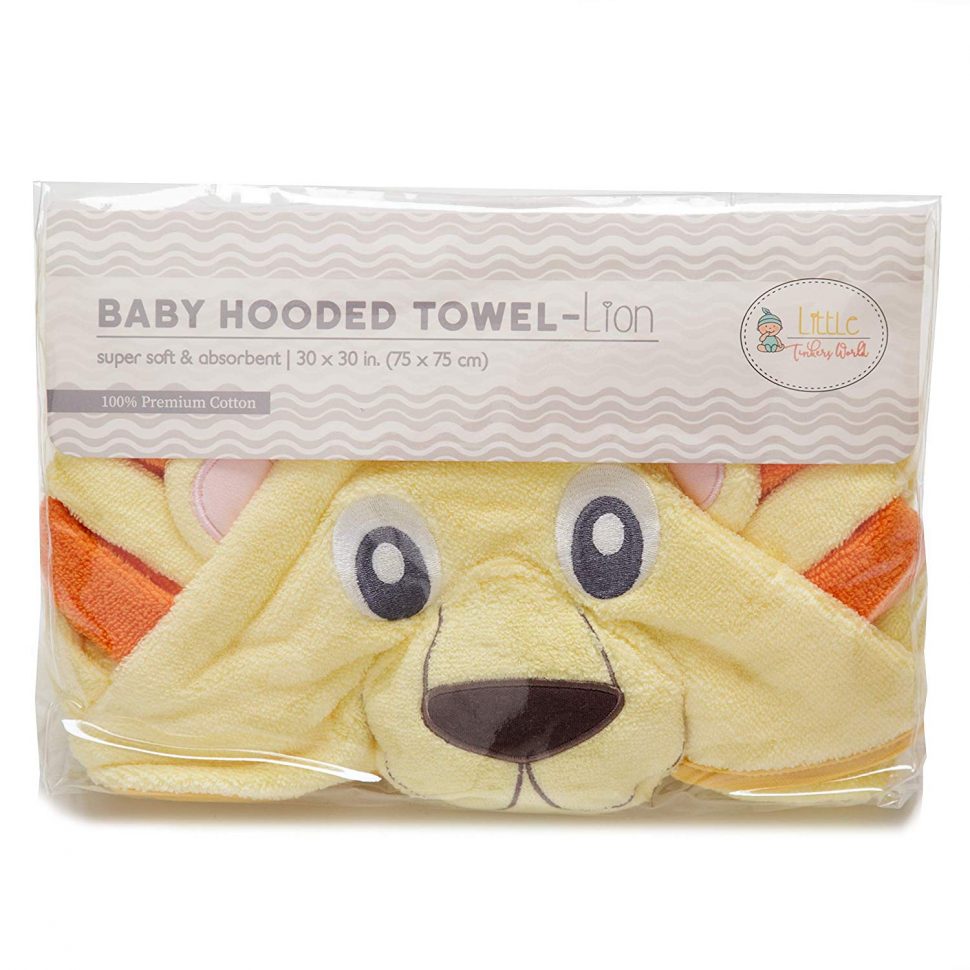Meet the interviewer
After spending years working jobs she hated, Tamara Tee became a Fulfilled By Amazon (Amazon FBA) seller. She wants other people to experience the freedom of working for themselves. To that end, she runs a YouTube channel that teaches her audience everything they need to know about Amazon FBA selling.
Tamara got a lot of positive feedback about PickFu from those who watched her first PickFu-related video (below) and tried it for themselves afterward.
So she decided she had to get an interview to round out her audience’s PickFu experience. In this interview, Tamara gets the inside scoop on PickFu from co-founder John Li, then walks viewers step-by-step through creating and analyzing two of her own polls.
Keep reading for highlights of the interview, or watch it below.
The history of PickFu
Tamara first asked John why he started PickFu. How did the idea come to him?
John told the story behind PickFu. He and his partner Justin built PickFu as a side project when they were working on another business. Even the basic prototype became a fantastic tool for feedback. So in recent years, they decided to build up PickFu and dedicate most of their time to it.
What is PickFu?
PickFu is a crowdsourced polling platform that helps businesses and business owners make better decisions.
PickFu has a panel of thousands of online respondents. If you run a poll on PickFu, these consumers answer polls, vote on your options, and give written explanations.
Here, Tamara jumped in to say that she loves PickFu because she can target Amazon Prime members. With PickFu, you make sure to get the right featured product photo in place before you make the listing live.
Next, John talked about how PickFu’s respondent system works. Since working with the PickFu Panel for a number of years, the team has perfected its system for tracking response quality.
Audience targeting with PickFu
Another thing Tamara really loves about PickFu is that you can target specific audiences. So in that vein, she asked John about how important it is to target a specific audience. Since sellers have to pay a little more to poll a targeted audience, would it be crucial to target parents if she were selling baby bottles?
John answered that if you’re selling baby bottles, you definitely want the opinions of your target customers — people who already have children — because they’re the ones who are going to be the decision-makers. He went on to say that there’s really no point in running a poll about baby bottles to a bunch of people who don’t have kids or don’t plan on having kids.
Why audience targeting matters
Tamara chimed in to say that targeting with PickFu is similar to targeting your audience when you’re running Facebook Ads or Google ads. Whether on a polling software or on an ad site, targeting gives you powerful results.
Customer satisfaction
In the second part of the interview, Tamara’s questions centered on customer satisfaction. She asked John what would happen if she was a new PickFu user who ran her poll correctly and it came in with a split 50-50 response or something similar.
Understanding a split response
John assured her that this does happen, but that the poll still has plenty of value. The benefit of PickFu is that respondents tell you why they chose A, B, C, or D. So — especially when you get a tie — that’s when you need to closely examine the responses. Most of the time, you’re going to see trends between the people who liked Option A and the people who liked Option B. At that point, you could start gathering ideas for running a second poll.
Tamara asked an important question: “What if I’m still reading through the answers from customers but for whatever reason, I still can’t pick a choice because it’s 50%? What is your refund policy or credit? Do you credit new users back if they’re unsatisfied?”
PickFu’s satisfaction guarantee
John assured Tamara that PickFu has a 100% satisfaction guarantee. First, PickFu makes sure that all possible benefits of the poll have been considered.
You can mark answers that you feel are unhelpful and PickFu will get more respondents to fill those in. If you’re still unsatisfied and you feel like PickFu brought you zero value, let the team know and they’ll make it right.
Can anyone use PickFu?
In addition to Amazon sellers, Tamara continued, she also heard that PickFu creates polls for authors and gamers. Is it true, she asked, that even if you were trying to sell your house, you could put that on PickFu?
John confirmed that PickFu has had real estate agents put listing photos on PickFu to figure out which main listing photo would be better.
Yes, everyone can use PickFu!
In addition, authors regularly test their book titles and book covers on PickFu. Marketers test their blog titles and images before they publish. Game developers test their app icons or character art. Online store owners test different websites and product layouts on PickFu.
Basically, PickFu is an all-around tool for getting fast feedback.
Split testing with PickFu: Live demos
After the interview, Tamara ran two split tests using PickFu. She told the audience she’d be split testing titles and images for a hooded baby towel.
Split testing product titles
First, Tamara decided to split-test titles because that’s the first thing Amazon customers read when they see a product listing.
- She navigated to PickFu and created a new poll.
- She inputted her question: Which Title Do You Prefer For My Product?
- Option A says, “Hooded Baby Towel, Lion Design from Little Tinkers World, Ultra Absorbent, Durable Bath Towel Perfect for Girls and Boys by Little Tinkers World.” (Little Tinkers World is the brand name and the rest of the words are product keywords). For Option B, Tamara switched it up to: “Little Tinkers World | Hooded Baby Towel Lion Design, Ultra Absorbent, Durable Bath Towel Perfect for Girls and Boys.” Note that she removed the second mention of the brand name. The main difference between the titles is that Option A puts the keywords first. Option B, on the other hand, places the brand name first.
Choosing an audience
Next, Tamara created an audience of 50 respondents. But you can also do 100, 200, or even 500 people.
Because Tamara is selling a baby hooded towel, she only wants to get parents’ opinions. People can have kids at many different ages, so Tamara chose not to target by age. In the targeting selections, she chose ‘Number of Kids: 1 and 2.” Tamara added that sellers could add more audience targeting if they wanted to.
Tamara then moved on to choosing what information to collect from respondents. She selected age and gender and number of kids so she can see how many kids her respondents have.
She advised her viewers to get as specific as possible, especially if they’re selling products that are targeted towards a specific type of audience. A few minutes later, Tamara came back with poll results.
Which one won?
In Tamara’s poll, Option B won, just as she predicted it would.

There were 27 responses for Option B and 17 for Option A. Here is what some people said:
- “B is shorter and more precise about the baby towel.”
- “I like how it separates with the bar the brand and then the description of the product. In fact, the other one is too wordy because it states the brand name twice.”
For each response, Tamara noted that a seller could choose if an answer was helpful or not helpful, or ask a followup question of that respondent.
After reading what people were saying about Option B, Tamara moved on to Option A. One respondent said, “I prefer the title that lets me know what the product is upfront, leading with the ‘hooded baby towel’ portion. I don’t need to know who it’s by, at least not initially.”
Despite this comment, Tamara believes that if you are selling on Amazon, you need your brand name at the beginning of your title.
Tamara summed up her test poll by saying that if you want to split test your title and see what customers are responding to, PickFu does an excellent job. And it’s perfect for pay-per-click (PPC) selling if you’re running PPC and you want your titles to be clickbaity. You can test your titles on PickFu before running them live on Amazon.
Split testing images
Tamara then moved on to her second test on an image. The poll question is: “Which Image Do You Prefer For My Main Photo of My Product?”
First, Tamara uploaded her three photos of the hooded towel. Option A was her favorite, but she wanted to confirm her prediction.
Tamara then chose how her poll would run.
- In a ranked poll, respondents see all three options at once and rank their first, second, and third preference.
- In a head-to-head poll, each option is tested against the other across three head-to-head matchups.
Tamara chose a ranked poll. For the target audience, she selected the same custom audience: people with 1-2 kids only.
After just under two hours, Tamara came back with results.
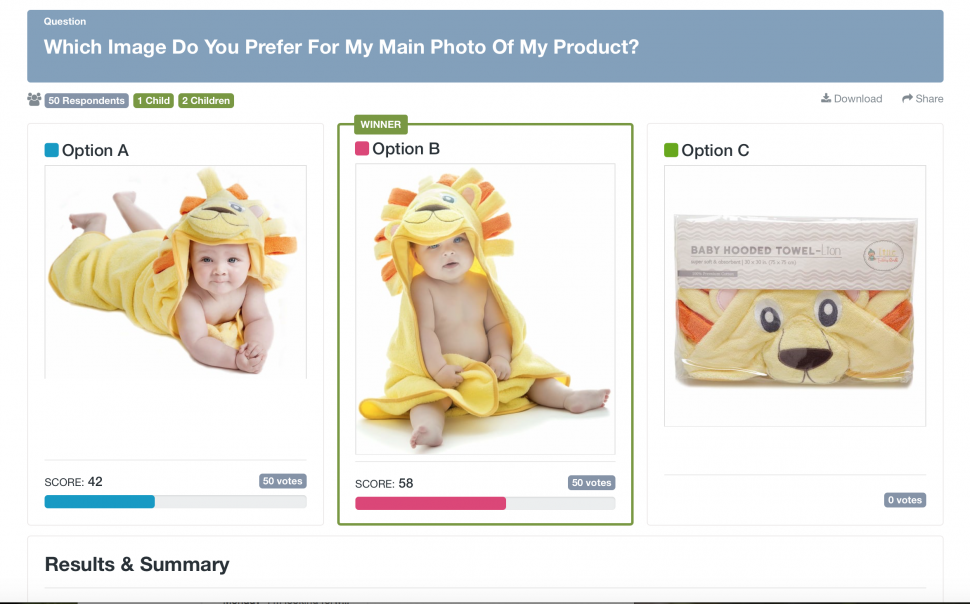
The winner is Option B — Tamara really hoped it would be Option A. Nobody chose Option C!
Why did Option B win?
Option B’s most notable and in-depth comment said the following:
“I prefer Option B because it shows the towel on the baby sitting up so you can get a good idea of how big the towel is and how it would look on a small child. Option A is good for similar reasons, but I think the laying down pose isn’t as appealing to me since I can’t see the sizing all too well. I do not like Option C because only showing the packaging gives me no idea how it will look like on my child.”
Respondents who preferred Option A over Option B said things like:
- “I like seeing the whole towel laid out.”
- “Choice B is uncomfortable looking.”
Even though Option B got the most votes, Tamara told viewers she didn’t think you could go wrong with Option A.
She finished the poll by telling her audience that she highly recommends they split-test more than two images. The responses people give are highly detailed — the most detailed responses she’d seen so far.
Ready to try PickFu for yourself? Set up your first poll now!
